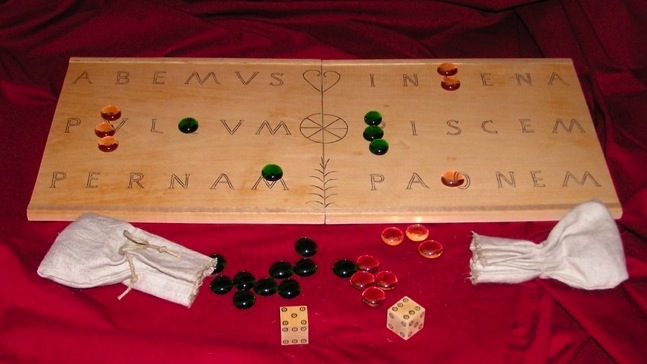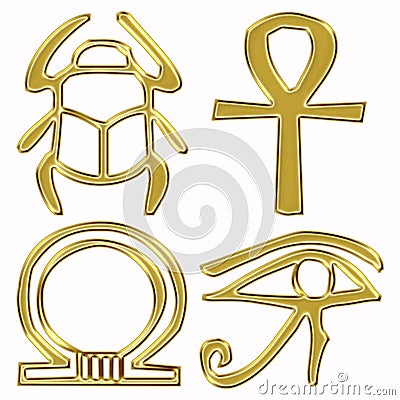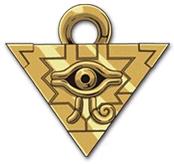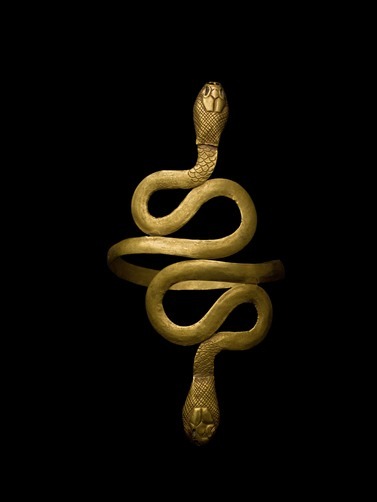Ben Greenhalgh
Design Document
Game
Design Overview
After
editing and evaluating a chosen board game of my choice (Senet). I
will now be showing how my past thoughts and observations can come
together to properly form this new board game giving it a new twenty
first century feel and name “Prosperity”
this new recreation based
off the original game of Senet has a number of different mechanics
and dynamics which I have spoken about before. I will not go into
long detail about the specifics on how the game works when played, as
this has already been covered thanks to the last assignment. The main
concentration therefore will be put into the design
mainly only concerning the board, board-pieces and the movement
mechanic e.g. Dice. The design theme throughout the game will be a
“Egyptian” theme sticking to a set colour pallet and then
speaking about why I have chosen to pick this design or these colours
and backing this up with some research and possible references
throughout the design document.
Gameplay
The
game will be played until all 7 counters have made it to the end of
the game board. Overall there are a number of different squares at
the end of the game which can dramatically change the game play
significantly which means the game can therefore be played
strategically and players will adopt a number of different strategy
ideas when playing the game which also means that the game can be
very hard to predict and forward motion can be therefore judged by
the other players but never properly understood like another game
like Cludo which is a very popular game using mainly hidden
information but you can also strategically predict player movement in
my game as there are limited movement pattens within this game.
Overall its the end squares on the game board which can change the
game giving the player who is not doings so well the advantage to
came back giving then the player in the lead a real struggle to hold
this lead and giving the player in last place the hope of a come back
into the game because the last thing a developer would like is a
player giving up on the game because they think they are to are far
behind. Human contraception can destroy a game if the player feels
they are left out and there is no way they can continue and they are
not enjoying there stay in the game then your game becomes obserlete.
On the other hand the player in the lead my not like the last squares
on the board everyone is then engaged in the game play ever hoping
they can come back into the game if they can get past these end game
obstacles and win the game.
Unique
and Iconic Features
Most
iconic Feature of the game is the number 7 Used to represent the Dice
(7 sided Dice), the number 7 then being lucky and changing the game
play as the number seven has its own rule different from the other
numbers and there are 7 pieces which you move around the board and
once all 7 pieces have been made it to the end of the game “The
last square on the board” you have won the game or lost depending
on if it was you that got all 7 to the end of the game and it was not
your opponent. The overall board lay out is another iconic feature of
this game using a futuristic feel of a once past game changing the
old rules and making them more interesting in the present day. The
last 7 squares on the game board the “special squares” have
unique effects on the game which is another use of the number 7
within the game. Basically when I was planning the game I started
with the simple idea of how can I change the game using the number 7
to represent everything making this the unique point about this game
and overall this could be seen as the unique selling point of the
game from a business point of view.
The
Dice Design
The
dice in my game is a pentagonal prism (a 7 sided dice). This will be
a all black dice with white number text showing on every side apart
from the side with the number 7 this will be shown in gold text as
this has major significance to the gameplay when rolled . This is a
game changing number on the dice and the best way to show this is may
option was to change the number 7s text colour. Overall the dice
design I very much like and is defiantly a iconic feature for the
game changing the traditional D6.
Image
of D7 (Pentagonal Prism)
Board Design
The game board
will have 2 holes where you can place your marbles so there will be 2
holes per square where you can fit your marbles nicely into place per
square there will be 30 squares in total 10 in each row with the last
7 squares the board being the effect squares where you will have to
read up in the rules on to what effect have changed the game for that
player who has landed on the square. Even though this is not the best
way to help the game progress within the game mechanics. After much
research into the board design I have come up with a nice simplistic
design which still sticks with the overall theme of a Egyptian style
feel when playing the game. Each square will have its own unique
patten representing as much as possible the meaning of the effect on
the game play e.g. I have landed on the 2 squiggly lines which the
player can then work out means river and therefore have this in the
memory so if they land on this again or another player lands on this
they can go right I know that effect without having to look at the
rules because the symbols are set in such a way that the player
remembers the effect because they are so iconic and no two symbols
are the same so this then playing on human philosophy even though in
my game there will be no squiggly lines there will be bold Egyptian
symbols.
The 7 Symbols
which will be on the last 7 squares (E.G. 27 = Square 27 on the Game
Board.
26
27 29
28 23
20
15
(Image of
where the symbols will be on the board)
(Image of what
the Board design should look mainly using the Light Orange Squares)
Game-Piece Design
My overall
vision of the game piece is that they are strategically appealing for
the playing and fit into the overall mechanics of the game. The game
pieces will be marbles which will be able to slot into the game
board. This has a subliminal message and the colours are set to
represent the fact of this subliminal message, players should be able
to expect independently the fact that these colours go with the game
and should not have to question why they are blue and gold coloured
marbles as they go with the theme. The subliminal message is the fact
that the gold marbles represent the sands of the Sahara Desert and
the blue marbles represents the water of River Nile. This is then
player 1 and player 2 game pieces and these pieces will slot into the
game board so the marbles don't role around. This one hundred
presents in my opinion makes the game then stand out as I think is
hard to think of another game which uses marbles as game pieces to
move around the game board which can then be slotted into place
around the game board.

Asset List
What is in the
Game Box
Appendix
| Starting the game (First Turn) |
Roll the dice to see who goes first (higher number wins first
move in the game) |
| How to win (When the game ends) |
The player who makes it to the end of the board with all 7
board pieces is the winner. |
| Setting up the game |
All 7 counters need to be placed on the game board and should
go in cosponsoring order of gold marble square 1, blue marble
square number 2 and so on going one after the other On the first
14 squares on the board. |
| Sequence of play |
Players take it in turns on movement using the dice in the game
until they land on the last 7 squares of the game board which
could change the movement sequence of the game depending on what
you land on as they all have there own different effect of play. |
| Player Movement |
Players move around the board from right to left is a “S”
shape. Movement is up to the player as they can chose what piece
to move out all 7 of there pieces but is depending on there dice
roll for specific movement amount e.g. 4 rolled = one marble
moving 4 spaces you can hop other marbles which does not count as
1 movement space but can not hop 2 marbles next to one another
e.g. B,G,B,B (G = Gold cant move because B = Blue has two in a
row) |
| The Last 7 Symbolic Squares
|
These squares all have there own Unique effects
Square Numbers 15,20,23,26,27,28 and 29
Square Number 15 sets the players piece back to one of the
starting squares but gets to have a extra turn rolling the dice.
(Sacrifice another game piece to get another piece further
forward)
Square Number 20 is a safe spot and players cant hop over this
space if a player is already in this spot but they can only stay
in this spot for 1 turn if forgotten and the opponent calls out
that they have been in the spot for more than one turn the this
piece is sent back to the starting squares.
Square Number 23 When you land on this square you can steel the
lucky number 7 dice role from your opponent but only if they rolls
the lucky number 7 you can stay on this square for as long as
possible unless a effect from another square moves you.
Square Number 26 this square gives you protection of this game
piece and can not be effected by other square effects.
Square Number 27 this square allows you to swap 2
pieces around but there must be next to each other and must be the
same colour for the swap to happen (no swapping to a open space
there must me a strait swap of two different game pieces)
Square Number 28 this square lets you swap any piece on the
board with any other board piece. e.g. (Swapping square number 8s
board piece with square number 20s board piece)
Square Number 29 This Space is the last test before
making it to the ending last square you must role the dice 3 times
and call a number e.g. 3 you keep rolling until you get the
number, if you fail to get the number then you must stay where you
are and your turn ends if you get the number you may proceed to
the last square.
|
| The Number 7 Dice Roll |
If 7 is rolled on the dice you get to roll again and your
opponent loses his next turn (So 3 rolls in total) |
| How the Game Ends
|
When All 7 of your coloured Pieces reach the end of the board
(The last square and then this means you have won Prosperity) |
|
|
|
|
Mood Board











